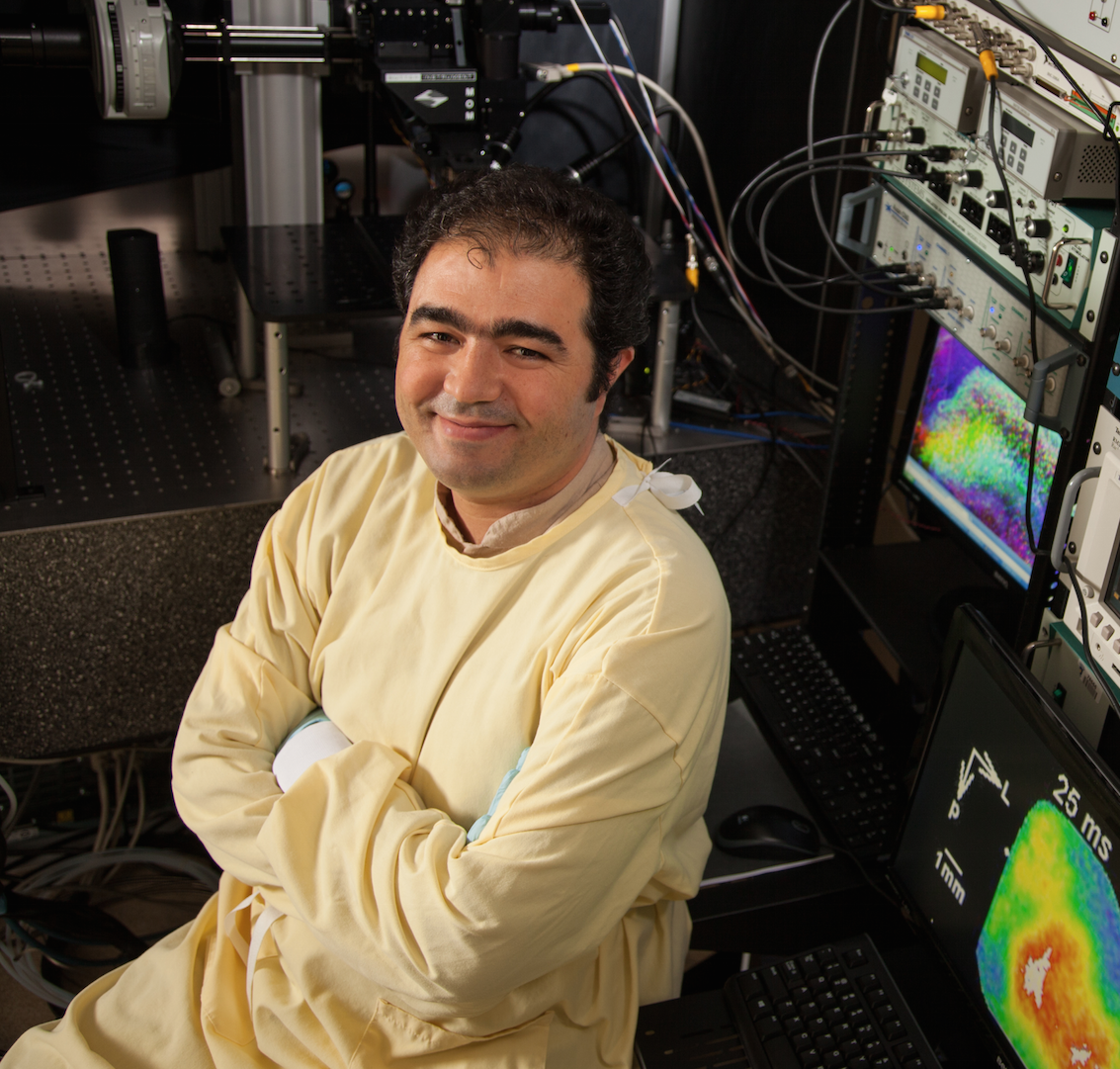“Neuroscience today is like how physics was in the 17th century. We are living in an era that is rapidly changing the way we think about the brain and its ability to process and remember information and recover from injury, just like 400 years ago when we had a rapid advancement in our understanding of the universe. It is an exciting time as we really are just beginning to understand how the brain works and what we can do to improve its functioning.”

That’s how Dr. Majid Mohajerani describes what to him is both the challenge and the thrill of his work as a neuroscientist at the University of Lethbridge. And now as the university’s Campus Alberta Innovation Program Chair in Brain Health and Dementia, Mohajerani is diving deeper into the mysteries of the brain by studying what happens after it is injured.
Specifically, Mohajerani is researching how the brain is affected by micro stroke, also referred to as a transient ischemic attack, or the transient disruption of blood flow in the brain resulting in neurological dysfunction. He wants to understand how such an event impacts the structural and functional changes in the brain circuit that affect neuroplasticity, the processes involved in human development, learning and memory formation.
“After a stroke happens in the brain, not only motor deficits, it also causes problems in cognitive function and memory, and results in dementia,” says Mohajerani. “We really don’t know how this phenomenon or process works, but it is an important question to answer because dementia is a huge problem in Canadian society.”
Indeed, a 2012 study commissioned by the Alzheimer Society of Canada found that the number of Canadians living with cognitive impairment, including dementia, stands at 747,000, and will double to 1.4 million by 2031.
Mohajerani originally trained to become a biomedical engineer, but while completing his master’s degree at Amirkabir University of Technology in Iran, where he learned how to use artificial neural networks to analyse brain functional activity. The subject got him fascinated with the brain’s complex processes, including how it learns and how it heals after an assault, and he ultimately switch into the field of neuroscience.
In his lab at the U of L’s Canadian Centre for Behavioural Neuroscience, Mohajerani is studying the details of brain activity right before, during and right after a stroke occurs in the brains of mice. He is conducting these experiments using narrow band imaging technology, a cutting-edge research tool that provides an in-depth picture of the brain, the underlying neural circuits of the brain and how the brain uses its own plasticity mechanism to recover from neural damage.
He will also share his passion for better understanding the brain with U of L students through a new fourth-year elective undergraduate course he is developing in neural technology that he will start teaching next semester. And starting in 2016, he will teach another new course that he will create, a mandatory undergraduate course for neuroscience students about molecular cellular neuroscience.
By the end of his seven-year term, Mohajerani hopes his brain mapping and stroke recovery research will yield insights into how to more effectively address stroke-related symptoms such as dementia.
“My ultimate goal is to contribute to the development of tools and pharmacology therapies that help improve the quality of life for people who have dementia, and provide preventative treatment to those who don’t.”
